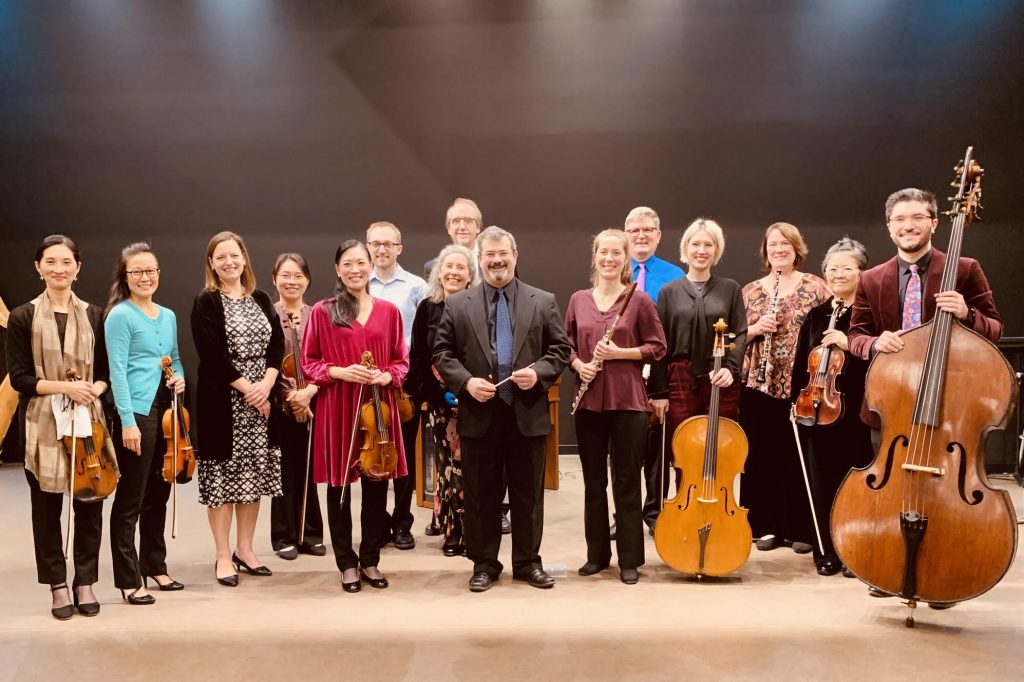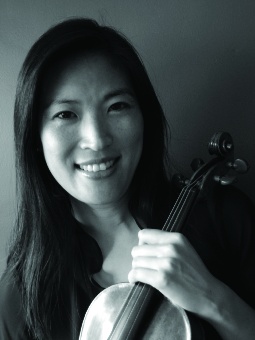‘An Elegy for a Vanished World’
Milwaukee Musaik performs great music by composers terrorized by the Nazis.
Milwaukee Musaik opens its season on Tuesday, November 18 with Resilience in Silence: Echoes of Memory and Survival. This event is a collaboration between Milwaukee Musaik and Violins of Hope-Wisconsin presented by the Milwaukee Youth Symphony Orchestra.
“Schulhoff perished in a Nazi concentration camp; Ligeti narrowly survived World War II, losing most of his Jewish family to Nazis; Weinberg fled the Shoa (Holocaust) only to face terror in Stalin’s USSR. Even American film composer Williams’ score to Schindler’s List, though composed decades later, is a form of sonic memory; an elegy for a vanished world.”
Twenty-one players, most also members of the Milwaukee Symphony Orchestra, will participate. Alexander Mandl will conduct the chamber orchestra works.
Ligeti wrote a cycle of eleven piano miniatures, Musica ricercata, as a playful experiment. Ligeti confined himself to only certain pitch classes in each movement, with each subsequent movement having exactly one more pitch class than the last. Ligeti’s subsequent arrangement for wind quintet selects only a few of the ten. (Select links to preview the music.)
A wind quintet version, Six Bagatelles, bursts with life, as the bright, varied timbres of the five instruments add dimension and vibrancy to the piano original. Reviewer Timothy Judd offers highlights: “In the second bagatelle, dreamy, flowing lines are punctuated by icy dissonances. The fourth erupts as a wild, off-balance Hungarian peasant dance. Using ten pitches, the fifth bagatelle … begins as a haunting folksong. … And the boisterous and frolicking finale is a jubilant excursion into bitonality (the simultaneous use of two keys) and alternating meters.”
Schulhoff’s Concertino für Flöte, Viola und Kontrabass (1925) seems at first like just another experiment. The trio offers the bright, agile flute, the warm, inner voice of the viola, and the deep resonance of the double bass.
Mandl puts the instrumental choice in perspective: “Schulhoff treated it like a mini concerto for three instruments, a Concertino. He brings forth the Czech folk dances, the Carpathian mountains music that he’s heard. When we look at it from that perspective, the music starts to make sense. Because you’re looking at folk music—usually you would have had some kind of a folk flute. And then you need something that’s providing harmonic background, which is the bass. With the viola in the middle, Schulhoff is literally covering the musical ranges of the tessitura, and it makes sense totally.”
Weinberg’s Chamber Symphony No. 4 was his final major composition. Mandl reflects on this work: “He dedicated the symphony to the memory of those that were fallen in World War II. A solo clarinet exemplifies the cries that would have been there. And of course in Jewish music, clarinet is literally representing the human voice, the human soul.”
Todd Levy is featured on clarinet.
In the final movement, the music fades to a reflective mood, with plucked strings over a drone by double bass, ending in a single dramatic strike of the triangle. Critic Francis Humphrys reflects, “In its quiet and unassuming way, this farewell movement is deeply moving. Here is a man who suffered from the worst excesses of the twentieth century, who was content just to exploit his musical and dramatic genius and to live through his music. What other composer could end his final work with a single stroke on the triangle?”
The concert also looks back at the holocaust through the chamber orchestra arrangement, Three Pieces from Schindler’s List, from the film score John Williams wrote for Stephen Spielberg‘s 1993 holocaust film. The first piece, Theme from Schindler’s List, introduces the plaintive solo violin melody later so associated with the film’s Jewish narrative and Shoah remembrance. The second, Jewish Town (Kraków Ghetto – Winter ’41) evokes a musical‐portrait of the Jewish ghetto under Nazi rule — cold, dire, yet dignified. The third, Remembrances, offers a reflective epilogue on memory, loss and resilience.
Jeanyi Kim will be featured on the violin.
Milwaukee Musaik brings a unique strength to chamber performance: the opportunity to explore great music created for a mixed ensemble.
Milwaukee Musaik performs at 7 p.m. Tuesday, November 11, at the Wauwatosa Presbyterian Church on 2366 N. 80th St. Tickets may be purchased online.
Milwaukee Musaik will next a special concert on January 11 at the Sharon Lynn Wilson Center for the Arts. That program will also be a part of the Violins of Hope collaboration.
If you think stories like this are important, become a member of Urban Milwaukee and help support real, independent journalism. Plus you get some cool added benefits.
Preview
-
Alex Jones Will Play One of World’s Largest Theater Organs
 Nov 4th, 2025 by Martha Brown
Nov 4th, 2025 by Martha Brown
-
A Conga Line in Hell
 Oct 27th, 2025 by Michael Barndt
Oct 27th, 2025 by Michael Barndt
-
Four Great Composers Targeted by Hitler
 Oct 25th, 2025 by Michael Barndt
Oct 25th, 2025 by Michael Barndt






















